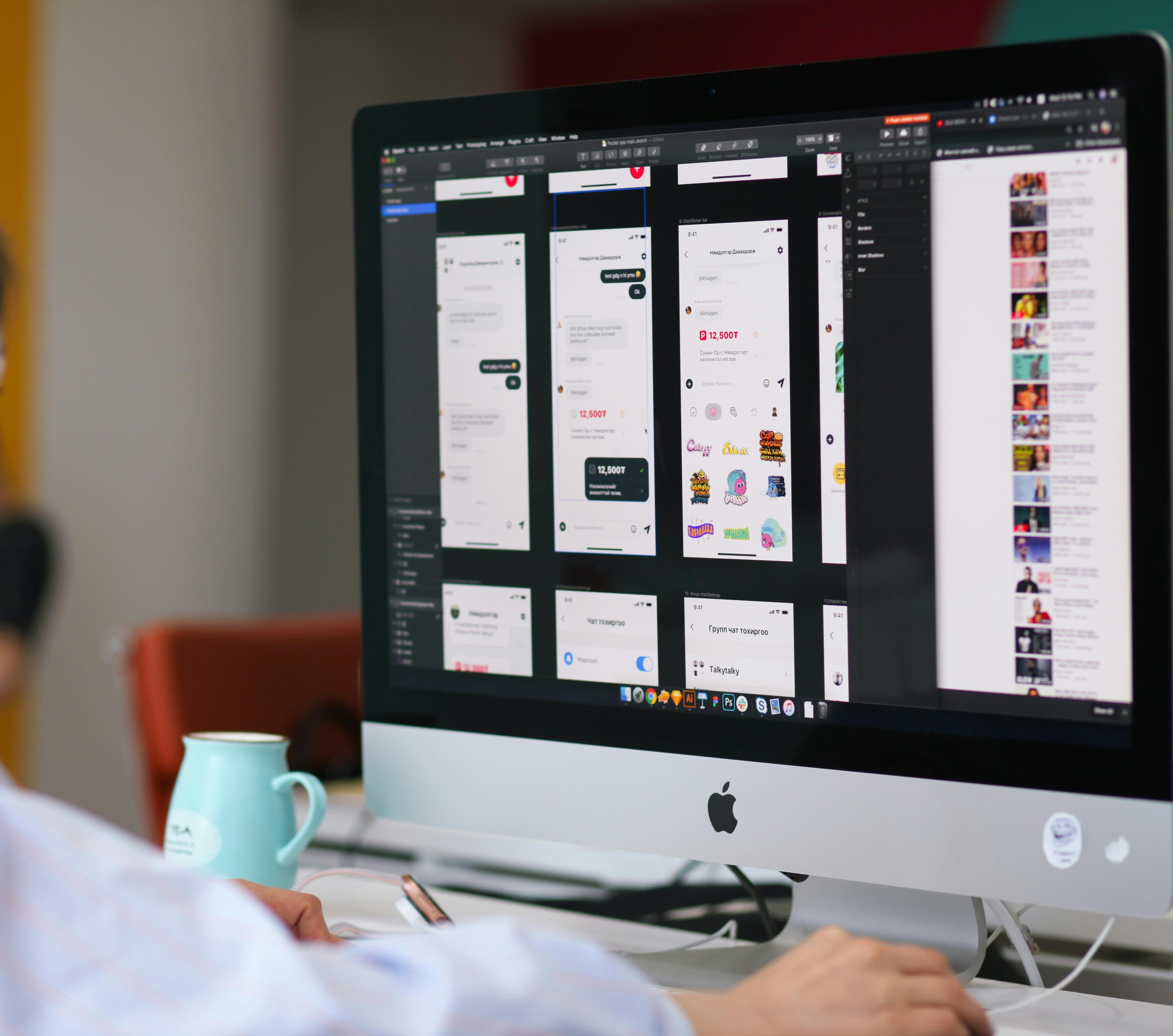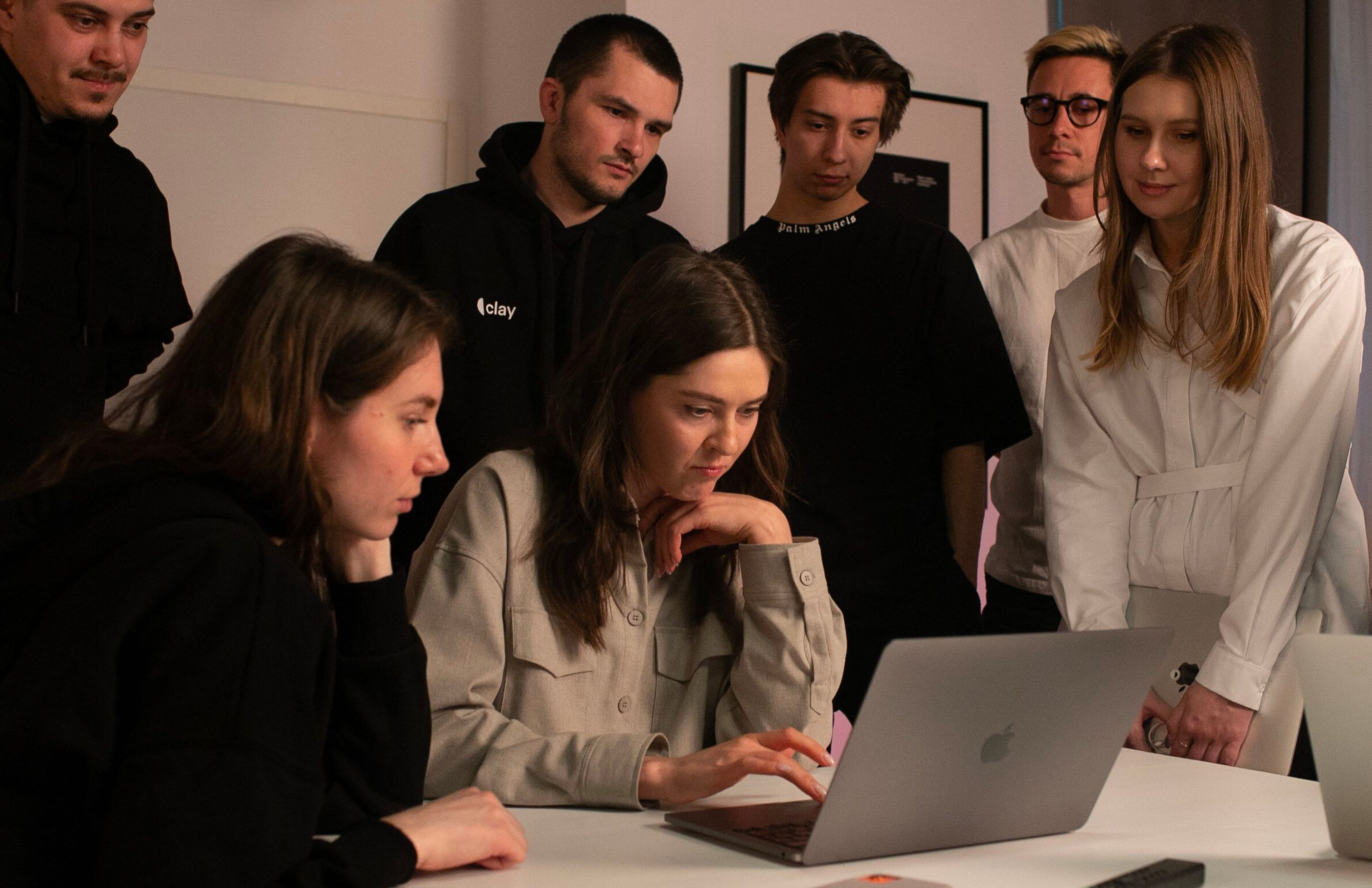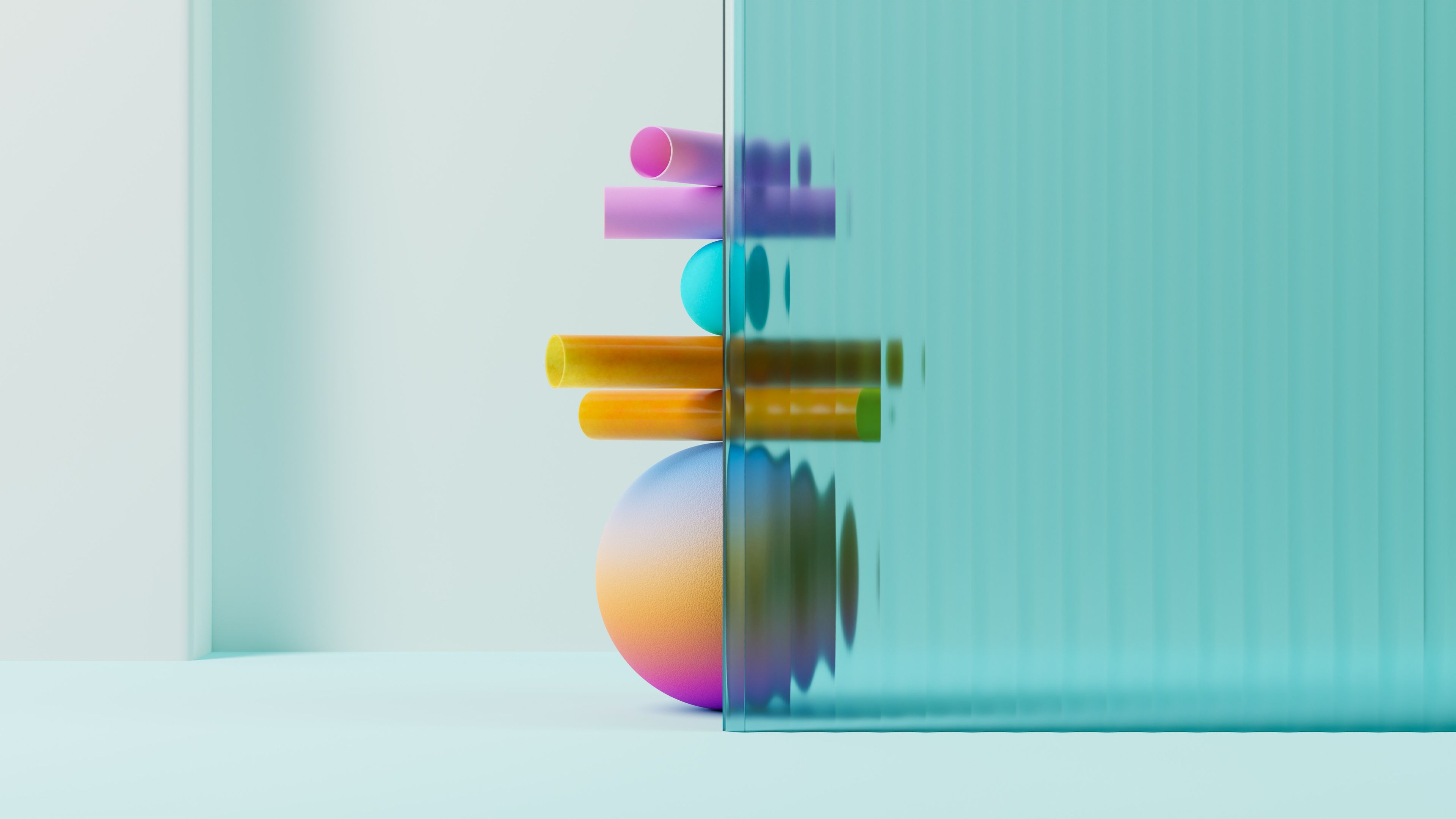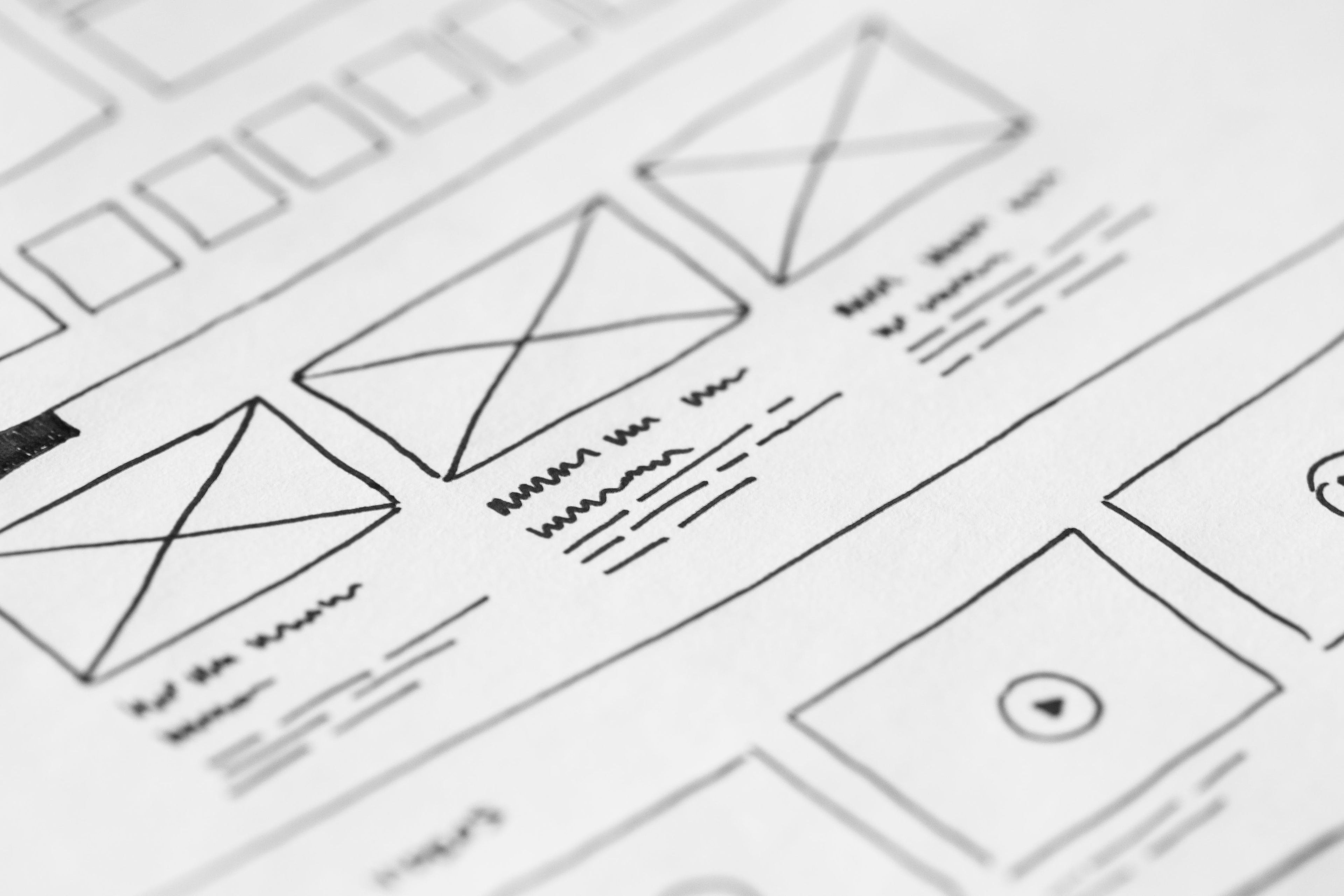History of UI & UX
Back in the ‘70s when people started using home computers they all had a command line interface, which was quite primitive compared to today’s graphical user interfaces with simple computing. In order to communicate with your computer you had to learn a programming language involving a complicated lines of code in order to accomplish very basic tasks.
Xerox PARC computer scientists in the ‘80s revolutionized the industry when they invented a graphical user interface (GUI) that allowed users with no coding skills to easily communicate with their computers with buttons, checkboxes, icons, and menus. This literally started the “Personal Computer Revolution,” opening the door to everyone who had any desire to use a computer.

In terms of UI and UX design, the history goes back to the mid-‘90s when the terms were first coined. It all started when the industry realized that digital products needed to be intuitive, so that they’d be more user-friendly than the ones being designed and built by the software engineers of that time.
This all started in 1984 with Apple Computer because they produced the first user-friendly personal computer, the Macintosh. The interface utilized a simple point-and-click mouse that revolutionized the industry, making computer use far more accessible. As the 2000s rolled around, Google and other tech companies started figuring out that to keep the personal computer market going they needed to make the user experience more engaging.
This realization resulted in a huge uptick of UX design jobs, as many tech companies now wanted to hire specialized UX designers. This is now a separate field of study, with a focus on creating user experiences that are not only engaging and enjoyable, but also compelling. Today, digital product innovators consider UX to be among the most important aspects of their development, and many companies have whole teams of designers whose only job is to create incredible user experiences.

With advances in technology, the role that UI and UX designers play also increases. It is no longer sufficient to be experts in computer interfaces as mobile phones, virtual devices, and those that augment reality must also be considered. Add to that screenless (invisible) interface components like light and dark, gestures, and voice commands, and you can see the mountain that must be climbed in terms of creativity.
The potential for UI design seems almost limitless with so many developments in what users seek. And many companies are welcoming these changes as they work to achieve an easier more naturally intuitive user experience. UI designers are tasked with creating interfaces for websites, but let’s not forget mobile apps and so much more as technology progresses. It’s safe to say that the need for user-friendly interfaces is not going away. Users of all ages, no matter how tech-savvy they may or may not be, want their electronic devices to be as easy as possible to navigate.
UX Design
The task of a UX designer is not limited to just creating enjoyable user-friendly, naturally intuitive websites but doing this for a whole range of products. Their work even extends to the aesthetics, as well as the product’s overall usability. All this requires extensive research to gain an understanding of user behavior, so that their designs will meet their wants and needs.
UI Design
UI designers are the ones creating the appearance and interactive aspects of the digital product and/or website and how they behave. Bottom line, how the interface looks and feels is the responsibility of the UI designer, in terms of the visual elements and how they’re all laid out. The goal is for users to be able to easily find what they need. The UI designer must consider how different types of platforms will display their designs, including desktop and laptop computers, tablets, mobile devices, and more.

UX vs. UI Design
UX and UI are two entirely different things, although both focus on enhancing the user’s journey. As previously stated, UX designers work on the website or product’s general functionality, feel, and ease of use. Their design goal is to meet the needs and wants of users as revealed in their behavior. On the other hand, UI designers are focused on the structure and aesthetics of the interface by creating naturally intuitive designs that can be seamlessly displayed on all types of platforms. The layout and visual aspects of the interface must allow the user to easily find what they need.
Furthermore, UX designers must think about how the product or website can be made accessible to the impaired or disabled, whereas UI designers are concerned about fonts and color schemes in creating a visual experience that users find pleasing to the eye. Therefore, both designers are vital to the successful completion of digital products, but they do play distinctly different roles in reaching that goal.
What Are UX Designers Responsible For?
UX designers are responsible for ensuring that the user’s journey is not only intuitive but enjoyable as well. Their task is to create a digital product or website that is cohesive in terms of aesthetics, layout, usability, and navigation. They research users via surveys, interviews, and analytics to understand their behavior, wants and needs. They usually collaborate with the UI designer working on the same website or product, focusing on its look and feel.

As advances in technology evolve and users start to expect more it is critical that UX designers keep up with the trends in order to create a compelling user-friendly design. UX designers must continually find new ways of improving the digital products and websites they work on. Their job involves creating everything from storyboards and detailed wireframes to complete prototypes of their designs as they work to design user experiences that are not only visually appealing but also efficient.
The following is a list of responsibilities and routine duties that today’s UX designer must handle on a regular basis:
- Research on target audience, customers, and users
- Continually monitor and analyze competitor products
- Product design strategy and setup, wireframing, and ongoing content creation
- Testing of prototypes to evaluate outcomes and fine-tuning of further versions
- Set tracking goals and improve optimization by implementing UX analysis
- Coordinate with UI developers and designers in planning future development
The role of a UX designer is all encompassing and exciting, involving product design while often managing multiple projects at once, and then handling certain marketing aspects. Basically, the work of a UX designer varies considerably based on their training and experience as well as the company that employs them.
What Are UI Designers Responsible For?
The work of a UI designer is to make sure that the website or digital product’s user interface is visually pleasing while also being functional. They are tasked with the job of creating a nice-looking layout that is intuitive and easy for users to navigate. As with UX designers, UI designers must also stay up to date on the latest tech and design trends, so that the layouts they design meet or even exceed user expectations. In creating the visual elements they use After Effects, InVision, Photoshop, and Sketch. These include the buttons, color schemes, icons, images, typefaces, and videos.

Furthermore, a UI designer has to figure out how the designs will be displayed on various platforms, including desktop and laptop computers, tablets, and mobile devices. To achieve a consistent look on all types of platforms they have no choice but to create multiple versions of every design to fit the size and resolution of each device. They need to combine their technical expertise with the principles of design to create a user experience that not only attracts users, but also engages them enough to return time and time again.
Creating a flawless user experience requires combining a number of different user interfaces together, so that they work in unison, resulting in a beautiful eye-catching digital product or website.
To be precise, UI designers must focus on creating each interface or screen that the user will see on their journey, whereas UX designers consider all the imperceptible aspects of the user’s experience. Both elements combined together is what creates the user’s full experience. The boundaries of UI designers are very distinct, unlike those of UX designers, so UI designers can easily describe their limits.
The Role Research Plays in Both UX & UI Design Processes
UX Research
Research is a vital aspect of both UX and UI design. UX designers undertake several different methods to gain an understanding of user behavior so that they can create designs that are not only appealing but also meet their needs and wants. They must figure out how users are interacting with their digital products and websites. With this knowledge, they can focus on creating user experiences that are intuitive, enjoyable, and engaging. Additionally, UX research allows designers to pinpoint potential issues early in the process so that they can be addressed prior to launching the product or website. By employing research methods throughout the design process, developers are able to create user experiences that successfully provide value to individual consumers as well as businesses.

UI Research
As discussed above, both UX and UI research are vital to the overall design of digital products and websites. Like UX designers, UI designers must collect information on user preferences as well as their behavior so that users find their digital products to be intuitive, enjoyable, and engaging. With sufficient research, designers can identify any potential issues early on, allowing them to make the necessary changes before the product is launched into the marketplace. With effective use of research methods, UI designers gain a solid understanding of how users are interacting with their digital products and websites. This allows them to create user experiences that individual consumers and businesses find valuable.

UX & UI Work Hand-In-Hand
UX and UI web development teams must work together if they expect to create successful websites and digital products, including apps. The focus of UX designers is on the user experience, which is determined through researching their behavior, needs, and preferences, whereas the focus of UI designers is on how the website or product looks. By combining the talents of both experts, developers can create journeys that are visually appealing but also work intuitively so that users can quickly and easily find what they need. In combination, UX and UI designers work to create attractive digital experiences that users find enjoyable and engaging while giving them an intuitive interface, allowing them to easily navigate their digital products and websites.
Importance of UX/UI Design
Without UX/UI designers working together, it would be difficult, if not impossible, to create successful digital products, websites, and apps. By combining their talents, all aspects of digital product, web, and app development can ultimately succeed in the creation of products and websites with user experiences that are intuitive and pleasing to the eye.
UX/UI design are basic elements of the process of creating successful digital products and websites. The goal is for the resulting product, website, or app to meet and possibly exceed user expectations without the need for expensive redesigns down the road. UX/UI also provides companies with an advantage over the competition by enhancing customer satisfaction and, more importantly, their loyalty.

For example, when consumers finds that a website or app is attractive while being easy to use, they are more apt to return time and time again. Likewise, if consumers find a difficult, confusing screen that doesn’t work quickly, they’ll immediately leave, never to return again. This obviously leads to lost sales and revenue.
In addition, UX/UI design is extremely important in raising search engine rankings, something all businesses are trying to do, so that they have better odds of reaching their target market. Search engine algorithms favor websites with pages that load quickly, have accessibility features for the disabled and impaired, and are optimized for mobile devices. All these aspects are built into the design throughout the UX/UI design process.
At the end of the day, UX/UI design is vital for any commercial enterprise hoping to penetrate digital markets and offer consumers the value they’re looking for via their products and/or services. When developers combine the talents of UX and UI designers along with the results of their research, they are able to create positive experiences that users find enjoyable and engaging. Users appreciate an intuitive interface that works quickly and effectively, whether it’s on a digital product or website.
Conclusion
For digital developers to create user-friendly products and websites, it is vital that they combine the expertise and research of both UX and UI designers. Research is an integral part of the process because it allows designers to create digital products and websites that meet the users’ specific needs and wants. When UX and UI designers work closely together, they are better able to design products and websites that provide value to individual consumers and businesses. The goal is to create visually appealing, intuitive interfaces that people of all ages and technical abilities find easy to use, so the likelihood of their returning time and time again is high.


About Clay
Clay is a UI/UX design & branding agency in San Francisco. We team up with startups and leading brands to create transformative digital experience. Clients: Facebook, Slack, Google, Amazon, Credit Karma, Zenefits, etc.
Learn more

About Clay
Clay is a UI/UX design & branding agency in San Francisco. We team up with startups and leading brands to create transformative digital experience. Clients: Facebook, Slack, Google, Amazon, Credit Karma, Zenefits, etc.
Learn more



